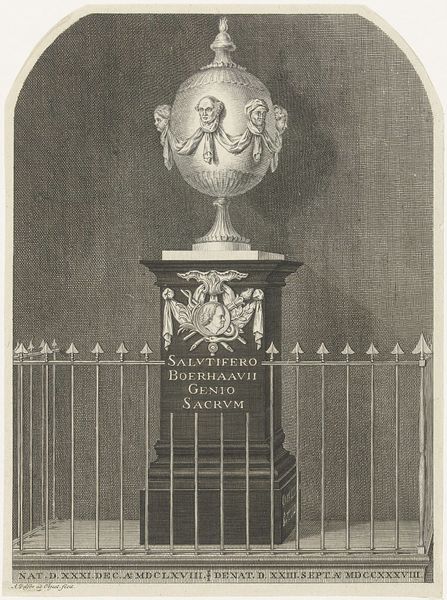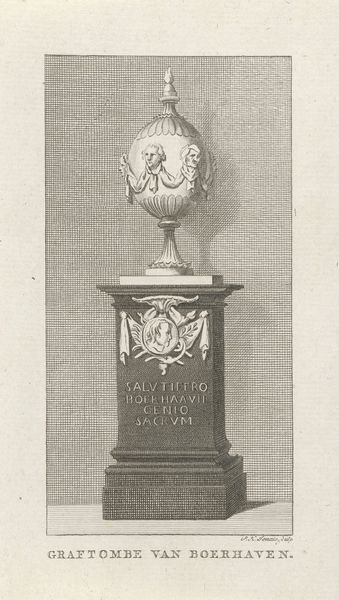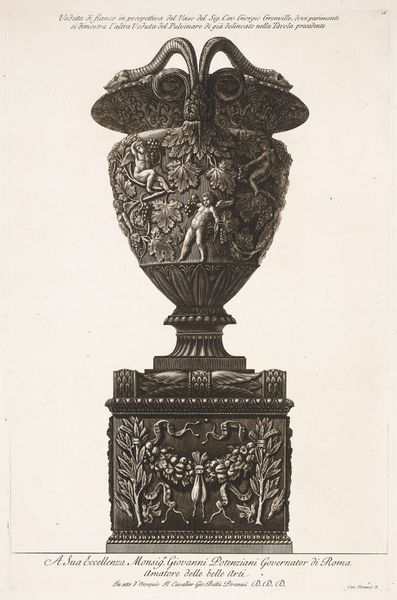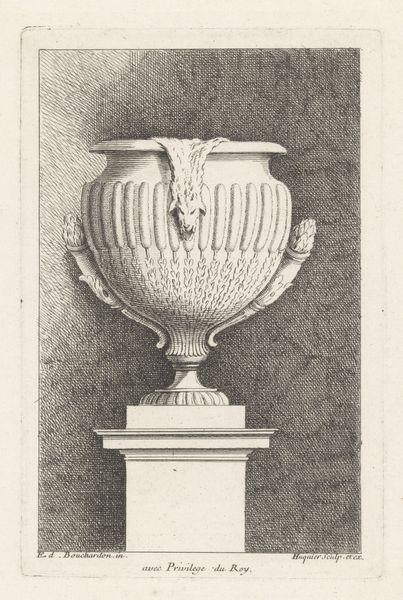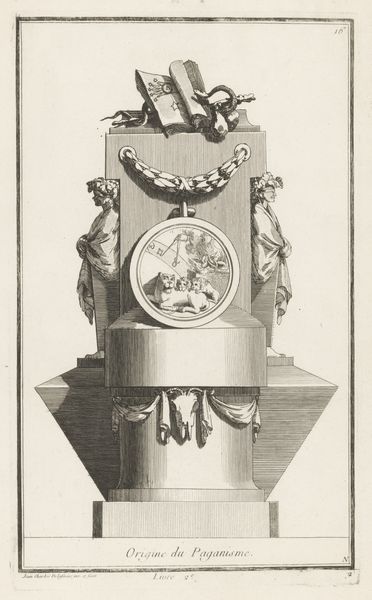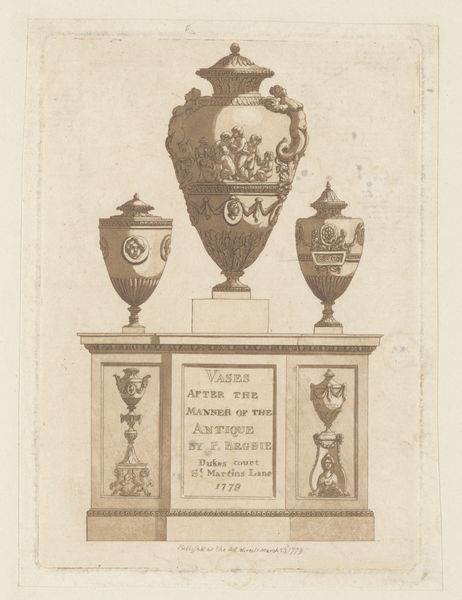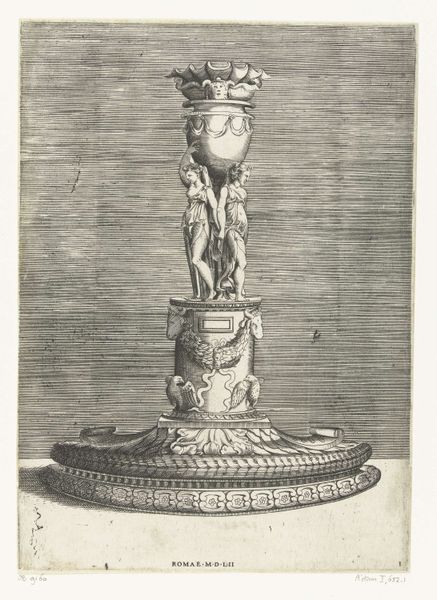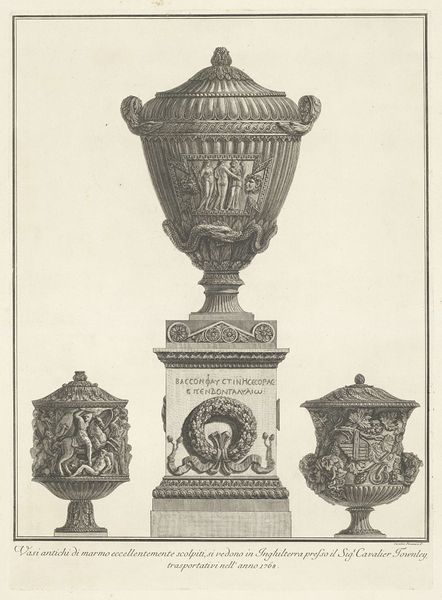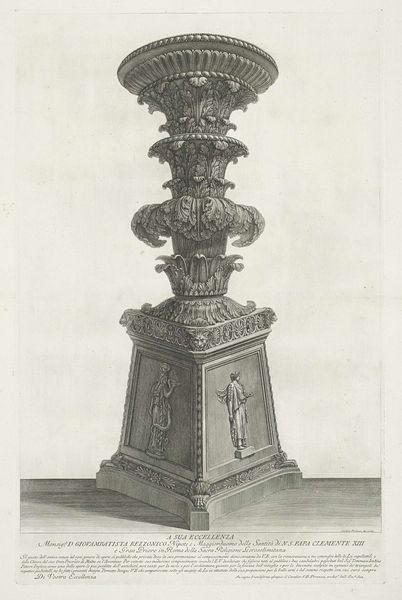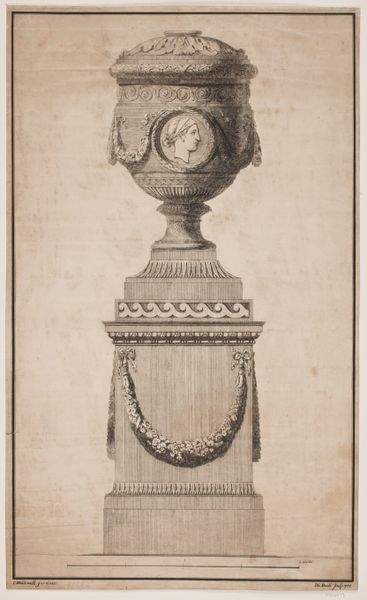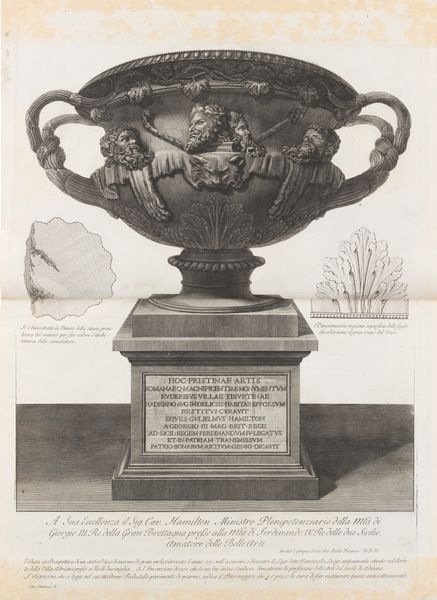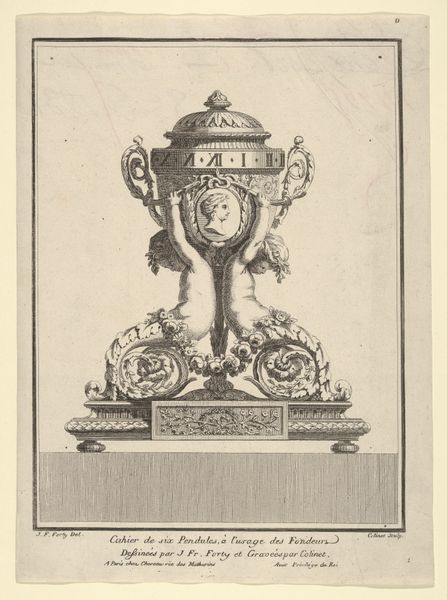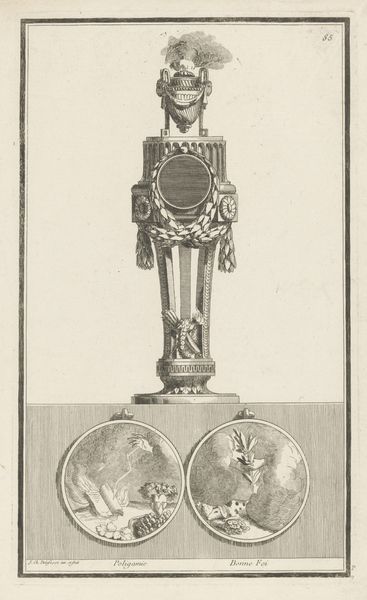
print, engraving
#
portrait
#
neoclacissism
# print
#
landscape
#
19th century
#
engraving
Dimensions: height 117 mm, width 81 mm
Copyright: Rijks Museum: Open Domain
This print depicts the tomb of Herman Boerhaave, created by Ludwig Gottlieb Portman. The monument, a potent symbol of remembrance, is dominated by a classical urn adorned with portrait busts. Such urns, commonly found in funerary art, echo ancient Greek and Roman practices, representing the soul's vessel and the transition to the afterlife. Notice how the faces emerge from the surface, almost as if struggling to break free, evoking a sense of longing and remembrance. This motif harkens back to ancient sculpted sarcophagi and even earlier death masks, which were intended to preserve the likeness and essence of the deceased. Consider how this desire to immortalize, to fix the image of the departed, reveals our deep-seated anxieties about mortality. The repetition of faces, the somber Latin inscription, it all serves to counteract the psychological disruption caused by death, a collective attempt to defy the ravages of time. The motif of enclosed faces and the urn as a container of memory persists, transformed but ever present, echoing through mausoleums and modern memorials alike.
Comments
No comments
Be the first to comment and join the conversation on the ultimate creative platform.
